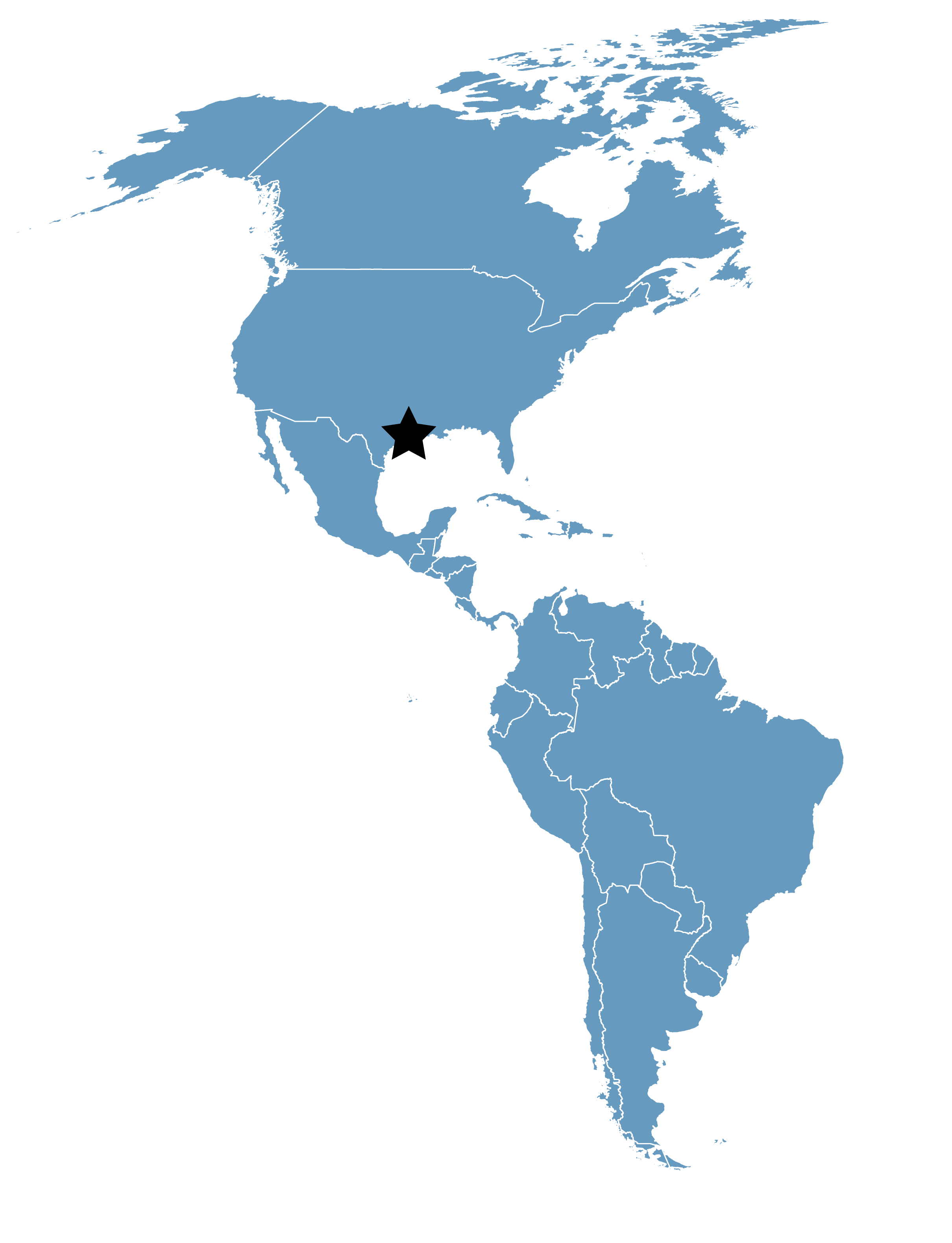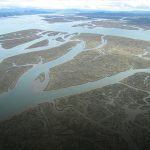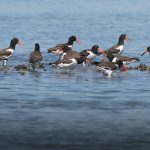Bolivar Flats
Location
Texas, United States
Category
International
Basis for Designation
Provides migratory stopover and wintering habitat for 100,000 shorebirds or more.
Size
464 hectares (1,146 acres)
Date Designated
December 1992
Site Owner
Houston Audubon Society
Overview
The Bolivar Flats Shorebird Sanctuary is a WHSRN site of International Importance located on the Bolivar Peninsula along the Gulf of Mexico northeast of Galveston Texas. The site, owned and managed by the Houston Audubon Society, is an exceptionally productive complex of mudflats, salt marsh, uplands and beach. This ideal combination of habitats provides resting, feeding and/or breeding sites for hundreds of thousands of birds each year.
Bolivar Flats Shorebird Sanctuary is a unique habitat complex that was created by the building of the North Jetty at the mouth of Galveston Bay in the late 1800s. The jetty has stopped the southward flow of the long shore current causing it to drop rich sediments. Sediments have accumulated and developed into mudflats full of invertebrates and salt marshes that are nurseries for fish, shellfish, and other marine organisms. Adjacent to the mudflats and salt marsh are coastal prairie uplands and open beach.
The site, owned and managed by the Houston Audubon Society, is an exceptionally productive complex of mudflats, salt marsh, uplands and beach. This ideal combination of habitats provides resting, feeding and/or breeding sites for hundreds of thousands of birds each year.
Shorebirds and Other Wildlife
Some 25 species of shorebirds can be found on the sanctuary during various seasons. Of particular significance are the large numbers of endangered Piping Plovers and threatened Snowy Plovers that use this area as a migratory stopover and wintering location. This area is also heavily used by thousands of wintering shorebirds including American Avocets, Short-billed Dowitchers, Willets, Dunlin, Western Sandpipers, and American Oystercatchers.
In addition to shorebirds, Bolivar Flats is also an important feeding area for wading birds including Reddish Egrets and Roseate Spoonbills. Large numbers of Brown Pelicans roost on the mudflats and feed in the adjacent waters. Nelson’s Sharp‑tailed Sparrow and Seaside Sparrow, both on the Partners In Flight WatchList because of their restricted ranges, can be found in the sanctuary.
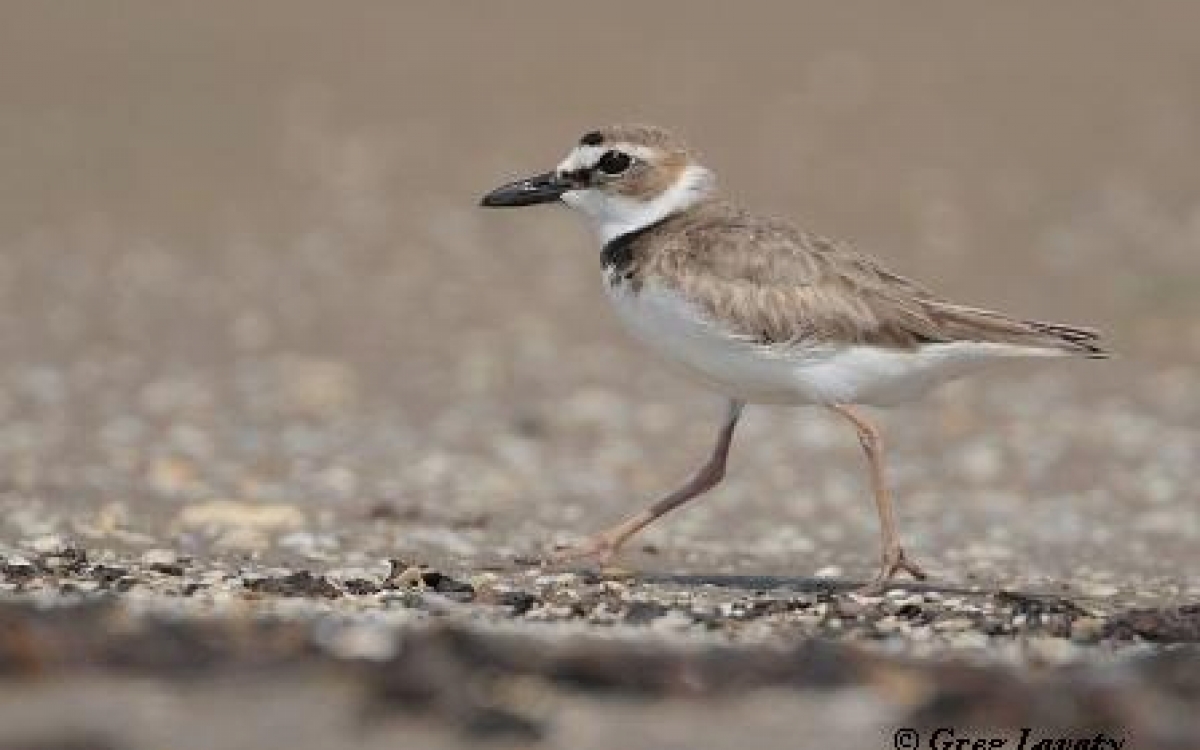
Photo: Greg Lavaty
Habitat Types
Intertidal Sand and Mud Flats: The extent of this habitat and the relative proportions of sand and mud are continually changing. This is due to the accretion (growth by addition of smaller parts) of sediments behind the North Jetty. Few higher plants can survive the harsh physical climate of this zone. It is however very productive due to regular inputs of detritus by waves. The intertidal sand and mudflats provide feeding habitat for large numbers of shorebirds, making it one of the most important habitats in the Bolivar Flats complex.
Beach and Dune Complex: This complex extends from high-tide mark to leeward marshes. The foreshore is generally devoid of vegetation due to wave energy. Although it is bare, it is an important feeding and roosting area for shorebirds. The beach is backed by sand dunes which are low, rounded, and well stabilized by vegetation. Predominant plants in this area are Bitter Panicum and Camphor Daisy. The better vegetated dunes are characterized by greater species diversity. Additional species of plants found in this area are: Beach Primrose, Ladies Tresses, Baccharis, and Salt Cedar.
Brackish Marsh/ Barrier Island Flats: This habitat typically occupies the area between the sand dunes and the interior bayshores of Texas barrier islands. At Bolivar the situation is complicated by coastal salt marsh to the west. The flats comprise a mosaic of sandy and silty substrates, with a range of elevations and soil salinity and are consequently it is vegetatively diverse. Marshhay Cordgrass Spartina patens, is typically dominant in the low lying areas, together with sword grass Scirpus americanus and spike rush Eleocharis albida. At higher elevations, grasses such as sea-coast bluestem Schizachyrium scopariumlittoralis are more common. Herbaceous plants range from sea lavender Limonium nashii to snout bean Rhynchosia minima and colonies of ladies tresses. Higher areas are being colonized by woody species like Baccharis Baccharis halmifolia.
Coastal Saltmarsh: The lowest elevation marshes behind the sand dunes are subject to periodic tidal inundation. They are dominated by smooth cord grass Spartina alterniflora together with lower growing plants such as sea lavender and sea purselane Sesuvuim portulacastrum. Black Mangrove can be found in the salt marsh, but it is not cold tolerant and may disappear after hard freezes.
Salt flats: These low areas are inundated during high tides, and stranded water evaporates and leaves a mineral crust on the surface. Few species of plants are able to live in this habitat. Glassworts Salicornia virginica and Salicornia bigeloviiare the predominant vegetation found here. Ground-nesting birds often nest in these areas.
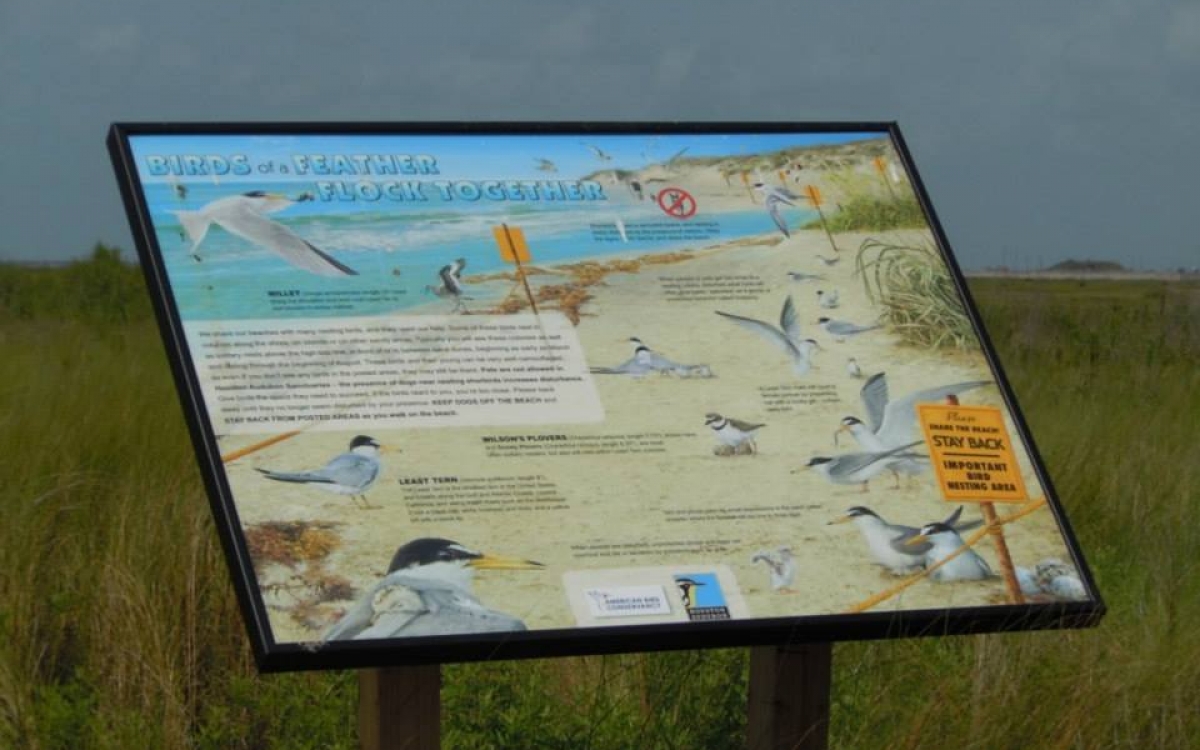
Educational signage for visitors to Bolivar Flats. The beach area is privately owned by Houston Audubon Society but open to the public by state law. Photo: Meredith G. Morehouse
Protection, Research, and Management
Current Threats: Vehicular traffic and unleashed pets are the primary causes of disturbance in the area that threatens feeding, roosting, and nesting birds. The site’s close proximity to Bolivar roads and the Houston Ship Channel creates great potential for oil and chemical spills in the area. Another threat is posed by fishermen who have requested that the slough next to the marsh be dredged. A dispute could arise in the future since the U.S. Army Corps of Engineers has considered the area as a source of sand in the past. The area is also actively accreting and is close to a highly urbanized area, thus there is the potential for future development.
Protection: The Houston Audubon Society has 1) erected a vehicle barrier to keep vehicles out of nesting areas and wetlands. 2) posted signs restricting vehicular traffic and prohibiting unleashed pets, and 3) developed an oil spill contingency plan.
Research and Management Activities: Houston Audubon Society regularly cooperates with and assists scientific shorebird surveys. The Society continues to maintain and extend the vehicular barrier. (Due to the rapid accretion in the area, the Flats grow by several feet a year.) Each year, the Society attempts to protect the Least Tern nesting areas within the sanctuary by posting signs and fencing off the sites. This has met with varying degrees of success. Beach clean-ups are held 4-6 times a year to remove plastic litter from the beach. Bolivar Flats was heavily impacted by Hurricane Ike on September 13, 2009. Beach sand was transported into the marsh creating nesting habitat for Least Terns and Wilson’s Plovers. Most of the debris left by the hurricane has been removed.




